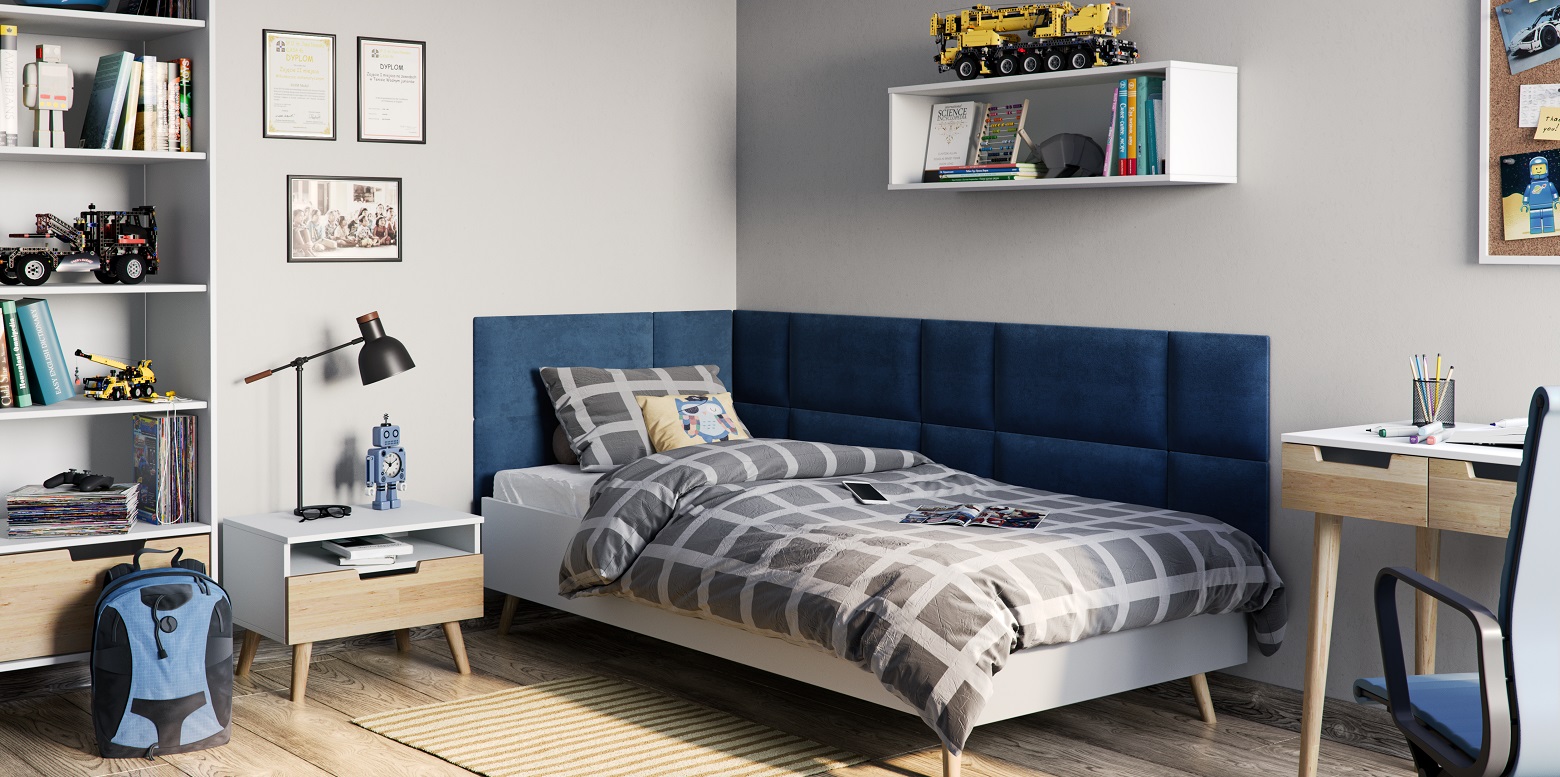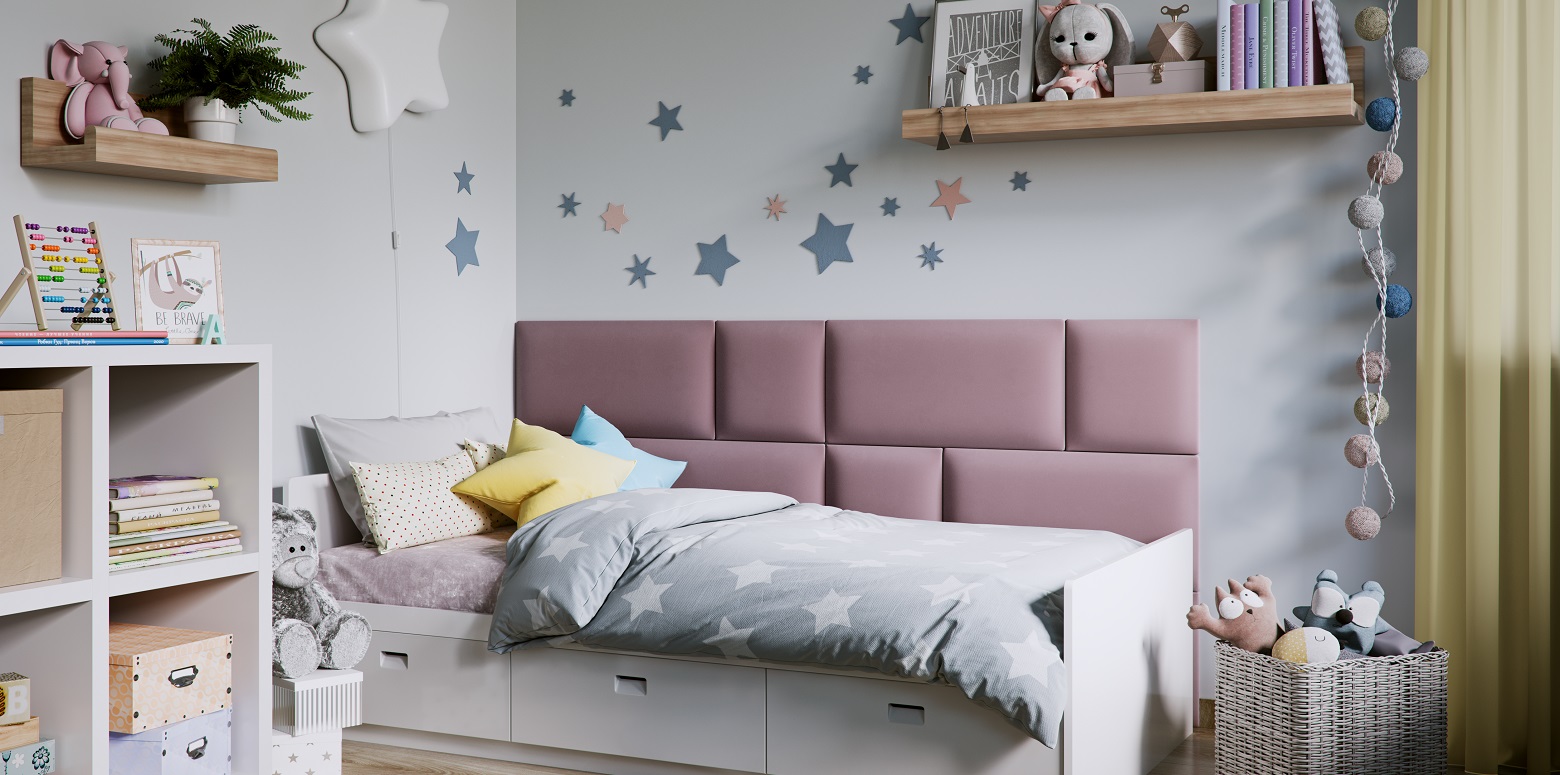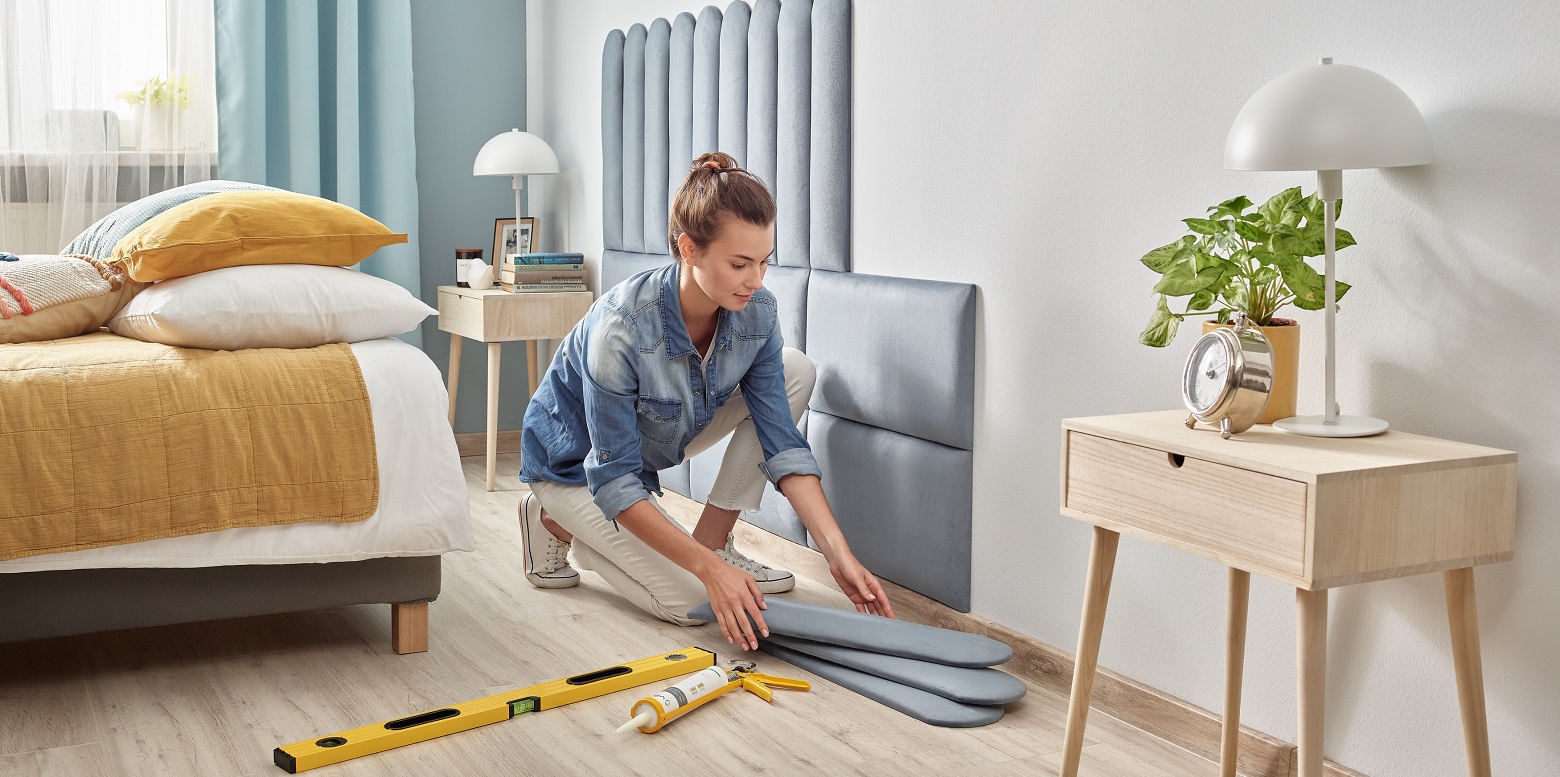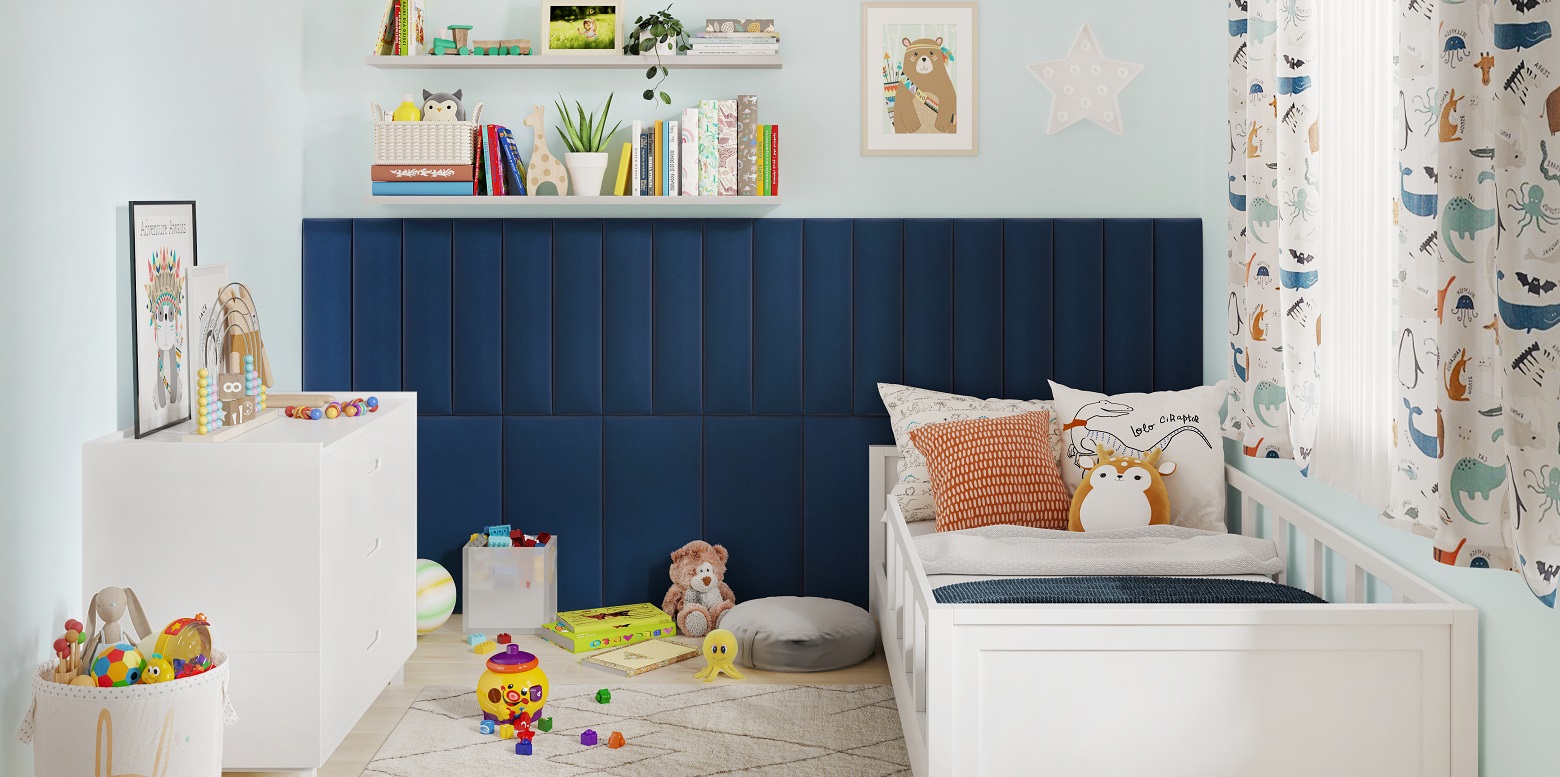
Upholstered Panels in a Child’s Room – Choose a Statement Wall Decoration
More and more attention is being paid to the design of children’s rooms. The functionality, safety, and look of the room are all important. After all, it is where the child rests, learns, plays, meets their friends, eats, and sleeps. In addition to choosing the furniture and accessories for your little one’s room, pay attention to wall finish. And don’t forget about the colour scheme. It has been found that colours have a significant impact on a child’s mood and their ability to concentrate. And this, in turn, is important for a good rest and for learning.
A Soft Wall in a Child’s Room – Functional and Safe
There are many ways to finish the walls in a child’s room. It is worth moving past the traditional option – painting the entire wall – and choosing something more unconventional, which will emphasise the charm of the room and still be a functional solution. How about upholstered panels? Thanks to the wide range of shapes and colours, you can find options for teenagers as well as younger children. In a toddler’s room they will be not only a decorative element, but also a practical solution, as the panels are soft and pleasant to the touch. They are a perfect finishing touch for the wall by the child’s bed. And they will keep your toddler from bumping into the wall at night or while playing on the bed.
The panels can also be used to create a “fence” or mosaic, which, in addition to being decorative, will protect the wall from damage. They will also minimise the risk of a painful collision with a wall during active play.
Colours in a Child’s Room – Learn the Meaning of Selected Colours
Before you decide on the shape or size of the panels, it is worth considering the colour. Why is this so important? Colours have an impact on our well-being, but also on our psyche. They can stimulate us, calm us down, or build a sense of security. Find out what effect you can achieve by using certain colours in your child’s room:
white – this colour has a calming effect; it helps you wind down and rest well. White also makes the room seem brighter.
blue – calms the mind, allows you to focus on the task at hand, and helps you wind down before bedtime;
violet – rich violet stimulates creativity, and more muted shades have a calming effect and help you relax, especially before bedtime;
green – calms the mind and helps restore balance and relieve stress;
yellow – yellow is an energetic, stimulating colour with positive associations. It evokes joy, facilitates creative thinking and learning. It also helps boost confidence. Just don’t use too much of it. For a child’s room, it is worth opting for more subdued, slightly muted shades of yellow;
orange – associated with fun and a big dose of energy. It stimulates creativity, but also brings a joyful atmosphere to the interior. Just as with yellow and red, use orange carefully – don’t go overboard with the intensity and quantity of orange in a child’s room;
red – has the strongest stimulating effect and should only be used as a pop of colour. Too much red can even provoke aggression and anger. Interestingly, it stimulates not only action, but also eating, due to its effect on the digestive system;
grey – has a calming effect, making it easier to fall asleep. It also perfectly balances out other colours and helps deepen their intensity. Don’t use too much of it in the room, as it can have a depressing effect.
How To Choose the Wall Colour for a Child’s Room?
The above description refers to the basic meaning of colours. It is worth knowing that sometimes lighter or darker shades can have a slightly different effect than the main reference colour. How can we use this information when selecting the colours for decorative wall finish – for example, upholstered panels?
In most cases, these are used as decorative statement pieces, in which case you can opt for something a little bolder, such as mustard yellow, which is a darker and slightly muted shade. It will work especially well if the panels are used near the play area. If you want to cover a larger part of a wall, or a space near a bed or study area, cool colours of varying intensity, such as marine blue or grey, may be a better option. They help you wind down, focus, and learn better.
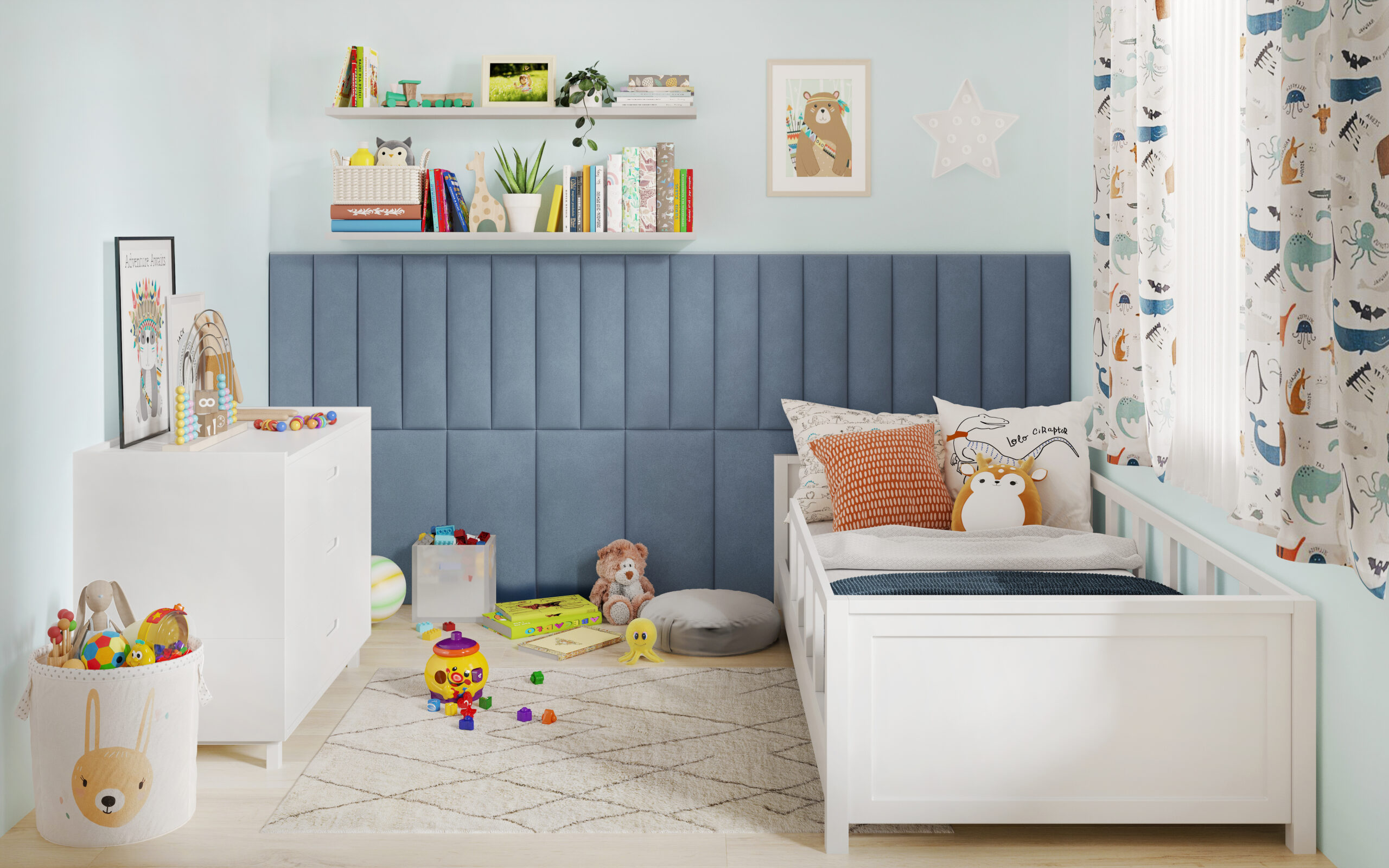 Does the Shape of the Panel Matter?
Does the Shape of the Panel Matter?
Decorative wall panels are available in many sizes and shapes, which gives you many options. And if you mix and match them right, you can achieve interesting visual effects. For example, if you want to optically enlarge a small room, opt for narrow and tall shapes. You can choose rectangular panels, but also ones with a rounded top. These are perfect for creating a “fence” or as a finish for a larger free space in the play area.
The smaller, square, rectangular, and geo panels, on the other hand, are suitable for creating a more complex mosaic. Note how simple forms complement a classic and minimalist interior. Geo, on the other hand, will work better with modern designs.
Play with Form and Colour – Create a Mosaic with Different Models of Upholstered Panels
Earlier, we mentioned upholstered panel mosaics. If you’d like to create one in your child’s room, here is a short guide on how to do it in five easy steps:
1. Check the available panel shapes and colours;
2. Measure the area on the wall where you’d like to create the mosaic;
3. Prepare a design on a piece of paper. To help you prepare your design, you can have a look at our ready-to-use suggestions here;
4. Buy the right panels and installation materials;
5. With the help of your family, install them on the wall (you’ll find a guide below).
When it comes to the form and colour of your mosaic, pay attention to which area of the room it will be installed in. The effect you want to achieve – to brighten, enlarge, or widen the room – is also important. The rest is up to you and your imagination.
Cleaning Upholstered Panels – See How Easy It Is
Many parents and guardians worry that walls in a child’s room can quickly become dirty. They decide to dispense with other forms of decoration and simply paint the walls. But upholstered panels are easy to keep clean. They can easily be cleaned with the soft attachment of a vacuum cleaner. In addition, once in a while or when necessary, you can clean the surface of the panels with a mild detergent designed for upholstery care.
Installing Upholstered Panels in Child’s Room – Family Cooperation Is Your Best Bet!
Remember that redecorating a room does not have to involve stress or working on your own for hours. Turn it into a wonderful family adventure!
Let your child choose the colours and panel arrangement with your help. If they’re big enough to help assemble them, let them do that too. It will be a new experience for them and you’ll spend time together in an interesting way. Installing upholstered panels provides the perfect opportunity for this – there is no need to cut them or drill into the wall. Before you start, all you need to do is clean the wall and lay the panels on the floor, according to the pattern you designed. Then attach them with adhesive or hook and loop fasteners and you’re done! Before you begin, check out our installation instruction video available here.
